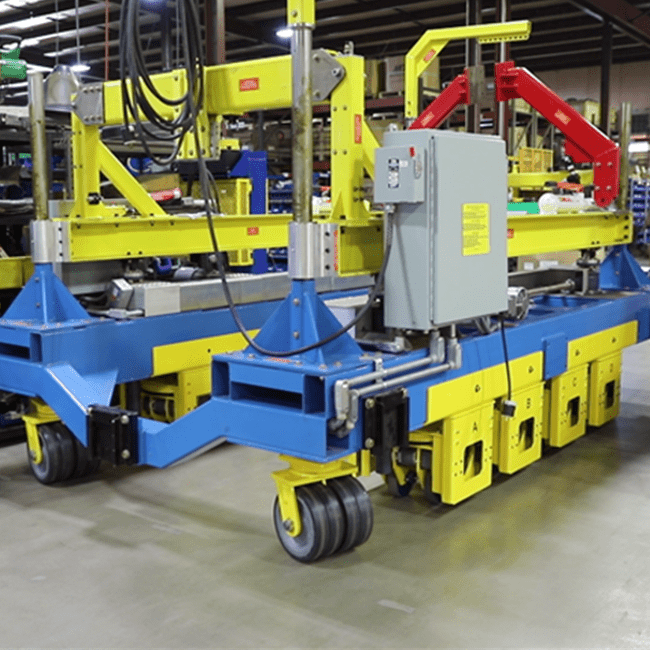

When your job deals with the challenges of getting to outer space, the products you design and build are far from ordinary. And for that matter, so are the challenges.
At the NASA Glenn Research Center in Cleveland, Ohio, wind tunnel testing is a constant. So is the fact that the fully assembled test articles for certain test facilities can weigh up to 24,000 lbs. Moving these complex builds is certainly no simple task.
And a recent discovery at the 10×10 Supersonic Wind Tunnel Facility added to these challenges. A portion of the floor that this hardware moves over from the buildup area to the test section didn’t have an adequate load rating. This was due to excessive point loads that the original casters imposed.
This was due to excessive point loads that the original casters imposed.
The maximum overall weight of the equipment and test article needed to be distributed efficiently. The current constraints picked up the assembled pieces via a drive screw lift mechanism and then turned via a motorized tug to get everything into proper position.
This was not an elegant process by any means. Additional manual labor was required to get the test article perfectly aligned in the wind tunnel test section for installation. If a solution to remedy the problem wasn’t found, they could no longer safely move completed test articles to the supersonic wind tunnel test section.
This would mean that test articles would have to be brought up to the wind tunnel test section in smaller, more manageable pieces and then assembled. As a result, the installation would take longer to complete, and fewer tests could be performed in a given calendar year. That is not a best-case scenario, as strict timetables for testing always present numerous challenges like cost.
The answer to this dilemma presented itself through the development of the Omni Directional Drive System (ODDS), an innovative platform developed by our subsidiary Conceptual Innovations and Caster Concepts.
“The process of developing the ODDS System was very seamless,” notes Robert Clark, Mechanical Testing and Facility Operations Engineer with HX5-Sierra LLC at the NASA Glenn Research Center. “Conceptual Innovations and Caster Concepts provided us with a turnkey solution.”
The ODDS System features 8 independently powered caster pods that enable the system to move forward and back, side-to-side, turn-in-place, rotate, and change direction while moving forward.
An energy chain powers each pod. As the wheel turns, the energy chain lengthens to accommodate. The chain also folds on itself when not extended. This innovation allows the pods to move independently or together.
“Conceptual Innovations also helped to re-certify the equipment to its accompanying load ballast weight of 30,000 lbs., which was never a part of the original deliverable,” adds Mr. Clark. “Conceptual Innovations has my utmost respect. I can only hope that myself and others here at the NASA Glenn Research Center would be able to work directly with or be associated with them on a future ODDS type of project.”